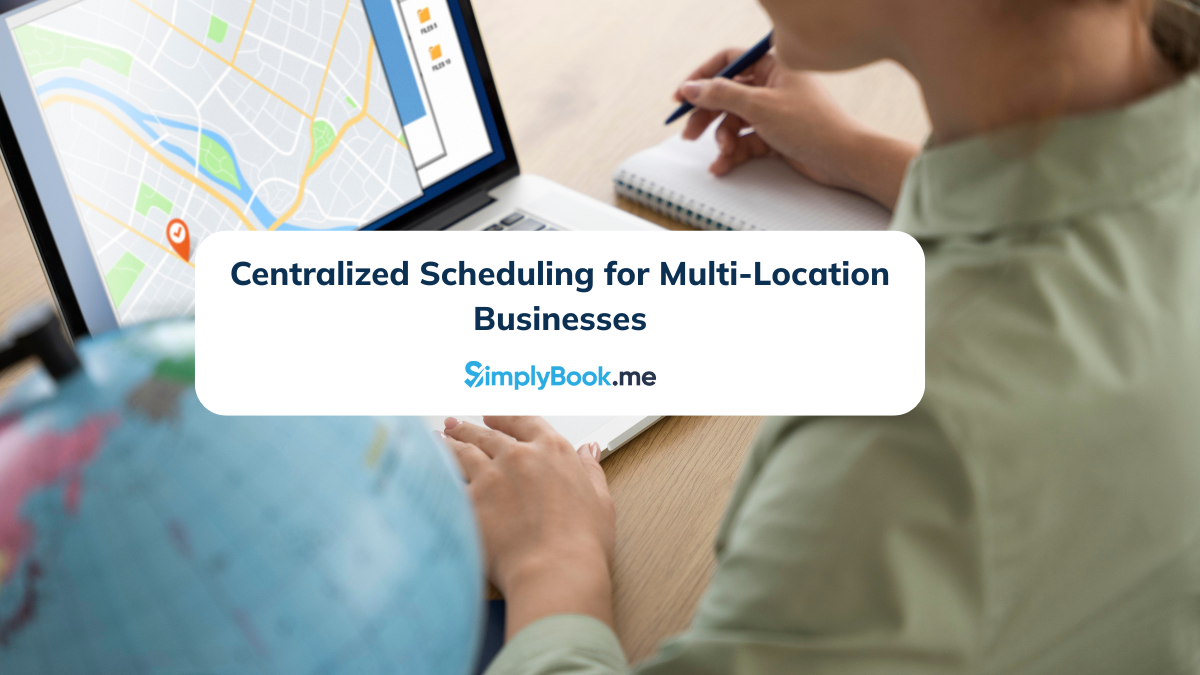How to Attract Customers to a Small Business

This post is also available in:
![]()
![]()
![]()
![]()
Small businesses may not have the luxury of having big budgets or large marketing teams, but that doesn’t mean they can’t make the most of the available tools to attract customers.
SMBs have the unique opportunity to tap into more focused, localized niches and can build more meaningful, personalized relationships with customers.
In this article, we’ve detailed the best strategies small businesses can use to attract customers and retain them—even with a scrappy, startup mindset.
Use social media to your advantage

Social media is one of the most powerful and cost-effective ways to reach your target customers. Over 3.6 billion people were using social media in 2020. Moreover, this number is expected to increase to 4.1 billion people in 2025.
Here are a few different tips and strategies to keep in mind while posting content on social media channels:
- Determine your target audience. Before you start posting, figure out the customers you’re trying to attract first. This will help you decide what kinds of content to post (and where to post them). Certain demographics hang out on specific platforms. For example, Gen Z primarily uses TikTok, whereas baby boomers mainly use YouTube and Facebook.
- Use hashtags. To grow your following, add hashtags to your posts that directly relate to your content or business. For instance, if you’re a software company, you can try using the hashtag #smallbusinesssoftware. You can also develop a unique hashtag and encourage people to use it when they post about you.
- Encourage followers to tag you. Try nudging your followers to tag your social media handle or business location in their posts so that you can get more exposure. Your social media handles should be very straightforward and memorable. Include your social media profile links on your website for easier discoverability.
- Tailor your content to each platform. People consume each social media platform differently. If you post the same content across your social media channels, you risk customers ignoring your content. Make sure your content is optimized for the algorithm of whichever platform you will post it on.
- Engage with your existing customers. It’s called “social” media for a reason—people use it because they like to engage with others. Respond to comments and messages as much as possible. The more responsive you are, the better you will fare with existing clientele and attract new customers.
Create a marketing plan
Before we get too far into different tactics, it’s important to note that regardless of the marketing channels you decide to experiment with (social media or SEO). It’s vital to come up with a marketing plan and communicate it with your team. It could be as simple as a PowerPoint slide listing those marketing channels, graphs or charts created in excel. Alternatively, you can create professionally designed visual infographics with one of the many timeline tools to visualize your marketing plans.
In addition to the marketing channels and campaign dates, it’s also worthwhile to include who owns each particular campaign and how you define your success criteria. For example, if you’re focused on local SEO, you could list the keywords you want to rank on page one and how many new sales those terms might drive for your business. Or, if you want to improve your customer service, you could come up with an average response time goal and then use helpdesk software to monitor those trends over time.
Update your website
Is your website serving your business as well as it should? Take a closer look at your existing site to make sure it meets the following characteristics:
- It’s well designed. Your website should be aesthetically pleasing to look at and have an easy-to-use interface. Anyone browsing should be able to find important information easily, such as your company’s mission, FAQ, and product and contact information.
- It’s mobile-friendly. Mobile traffic accounts for over 54% of all web traffic. So your website must function correctly on mobile devices.
- It’s optimized for search engines. 68% of all discoveries begin on a search engine like Google or Bing. Your website content should be organized and presented to appeal to people seeking a company like yours on all major search engines.
- It’s fast to load. The longer your website takes to load, the more likely people will drop off before they even reach your content. Ideally, your website should load in no longer than three seconds.
Invest in local SEO
46% of all Google searches have local intent—a number too significant to ignore. Your website should be discoverable for those searching for businesses in your local area.
Boost your local SEO by adding location-based keywords (think: “Portland bakery”) to your main website pages’ titles, headings, and body content. You can also publish pages or blog posts specific to the neighborhoods you serve.
You’ll also want to create and maintain a Google My Business listing. That way, searchers on both Google and Google Maps can easily find information about your business. Otherwise, they’ll likely see your competitors in the results instead. If you create online profiles or get listed in local directories, ensure your information is identical across platforms to avoid any confusion.
Offer attractive discounts for first-time customers

As a smaller company or brand, it can sometimes be a challenge to attract new customers. Giving a free trial, sample, or introductory discount on your product or service can get hesitant customers to give you a try. Here are a few ideas:
- Retail businesses: Offer enticing discounts such as buy 2-get-1-50 percent off or throw in a free upgrade for the first three purchases to entice people into your business.
- Ecommerce sites: Offer a discount on the first purchase when a new customer signs up for your email list.
- Service industries: Give discounts or credit towards the first service.
- Subscriptions: Try offering a free one-week or one-month trial.
- Software: Offer a free trial of premium service, or a freemium plan with limited features
- Any business type: Use contests and sweepstakes as a promotional tool and collect email addresses, phone numbers, or social media following entry requirements.
Provide great customer service
One of the best ways to gain and retain customers to advocate for your service or product is to provide exceptional customer service. After just one bad experience, 39% of customers are likely to avoid that company for the next two years. However, those with great customer experience will tell others and help you attract more customers.
It’s a smart idea to monitor your social media channels and profiles on review sites to engage directly with your customers. Many business owners believe that short response times are all that matters, but making the communication as natural as possible, being polite, and showing empathy is just, if not more, important for customer satisfaction. The more you can do to foster a great relationship with your current customers, the better off you’ll be in terms of growing organically. This is why many companies also focus on Customer Engagement Strategy to reduce the time-to-value ratio and avoid churn. It also makes customers feel appreciated, which ultimately benefits the small business.
Ask existing customers to leave reviews
Reading reviews from previous customers has become a crucial part of a buyer’s journey. According to TrustPilot, 89% of consumers worldwide read reviews before buying products. Even B2B buyers do most of their research online before ever engaging with a sales rep. Reviews increase your trust and credibility, helping you attract more new customers.
If you’re looking to get more reviews for your business, you can do so by creating drip emails that automatically get sent after someone completes making a purchase. You can use a CRM or other email marketing software to achieve this. If you have a physical storefront, you can also post signs in your store and restaurant, urging customers to leave reviews. For online and eCommerce businesses, it might make sense to include a feedback form on your website to allow website visitors to submit reviews.
Be sure to monitor review sites like Facebook, Google My Business, and Yelp for both positive and negative feedback. Respond to any complaints received at the earliest. Use the positive reviews as featured testimonials on your website and social media pages. Customers are more likely to give your business a try if they see how others appreciate it.
Turn employees into brand ambassadors
Your employees can be monumental in terms of generating brand awareness. An employee advocacy program lets employees build their credibility and position themselves as industry experts while promoting your brand to their audiences—it’s a win-win. Brand content gets eight times more engagement when shared from employees’ accounts than from the brand’s accounts.
To start an effective employee ambassador program, consider the KPIs you want to focus on. Is it increasing your follower count on your brand’s social channels? Is it engagement rates? Once you know what you want to achieve, you can recruit employees who are ready, willing, and able to help you meet your goals.
Start a cold-call campaign

Cold calling is the act of initiating contact with potential customers by phone. It may seem a bit old school relative to some of the other strategies on this list, but cold calling is still an effective strategy today. In 2019, 69% of consumers regularly accepted cold calls. A cold call aims to get leads for your product or service and establish a friendly, working relationship with them.
To find people to call, you can browse local media and directories for contact information of potential customers. Another popular option is purchasing contact information lists from third parties for a telemarketing strategy. Be careful with cold calling because a poor approach will drive away rather than attract customers to your business.
Work with local influencers
Hiring influencers to promote your brand is a great way to build trust with your target customers. And you don’t need to work with someone with millions of followers to see results. Micro-influencers ( with <100,000 followers) tend to bring in 20% more conversions and 60% more engagement than their macro counterparts.
To find influencers in your area, you can partner with a local marketing agency. Or, if you’re looking to save costs, search your business’s location to find anyone who’s located near you. You can also search through hashtags and tagged photos to find influencers who may be posting about you already.
Network within your industry and community
Forming relationships with other businesses and community members can help raise your business’s profile within your area. Some great ways to do this are participating in your community events or supporting a local charity. Getting involved in your community is an easy way to reach and attract customers who might never have found you.
You can also become a member of your local chamber of commerce, your trade association, and online networking groups and forums. Some groups even hold meetup events, which can help you meet key people as a small business.
Make the most out of the resources you have
Even as a small business, there are many local cost-effective marketing strategies that you can employ to attract customers who will browse and buy. You don’t need to invest a ton of money, but you need to invest time in researching, writing, and creating well-thought-out marketing plans.
With these tips, you’ll be well on your way to getting more traffic, leads, and customers through your marketing funnel.


Comments
0 commentsNo comments yet